Just because you won’t see Hasselt on most Belgium itineraries doesn’t mean that you should ignore it.
This quietly seductive city is best known for its wonderful Japanese garden, street art and its museum dedicated to jenever, Belgium’s favourite tipple. Hasselt is also an easy day trip by train from major cities, including Liège, Brussels and Antwerp.
Escape the tourist pack and visit Hasselt for the day. Let’s look closer at why you should do it and the best things to do in Hasselt.
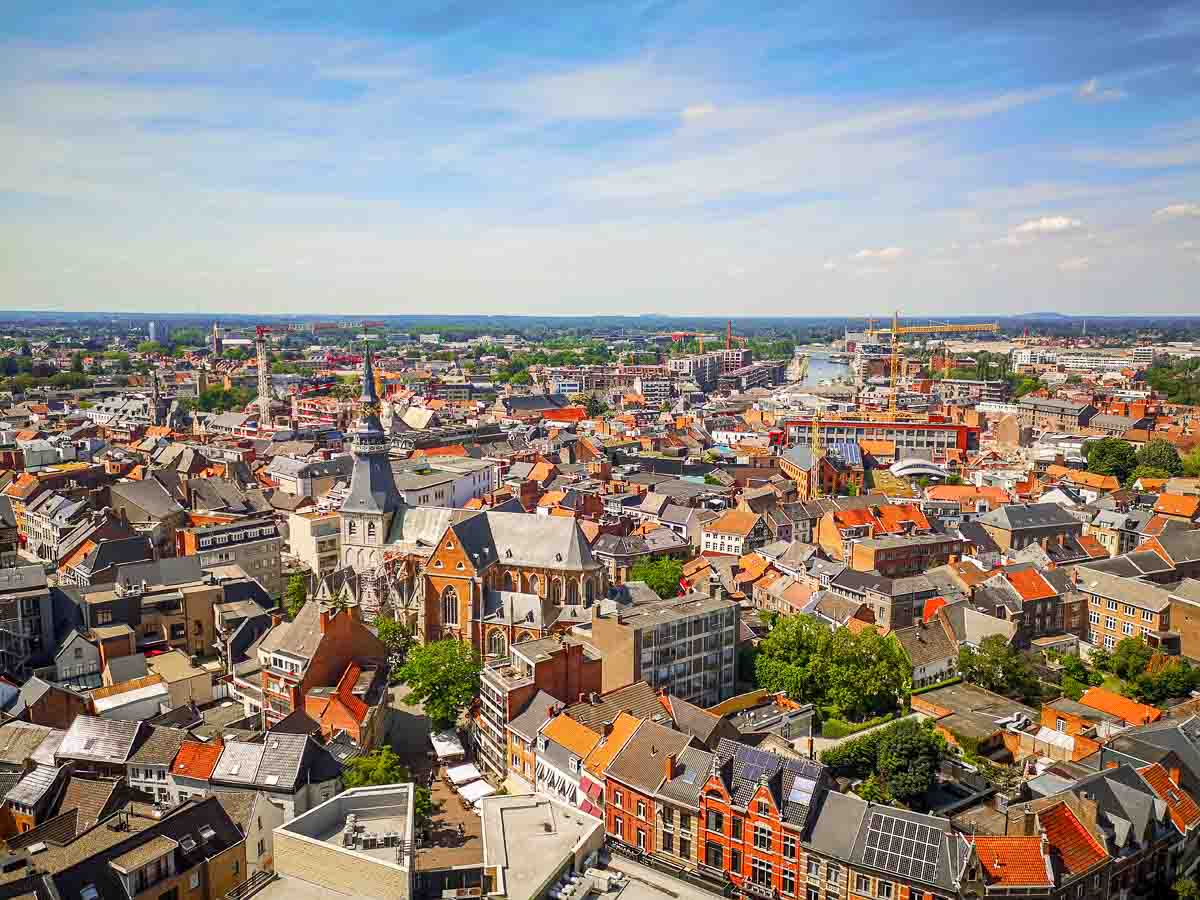
Why You Should Visit Hasselt, Belgium
1. It has the largest authentic Japanese garden in Belgium
For me, this was the main reason to take a day trip to Hasselt.
Designed by Japanese architect Takayuki Inoue as a traditional 17th Century garden, the Japanese Garden of Hasselt (Japanse Tuin Hasselt) spans six acres. It is a symbol of friendship between Hasselt and the city of Itami, which is close to the city of Osaka in Japan.
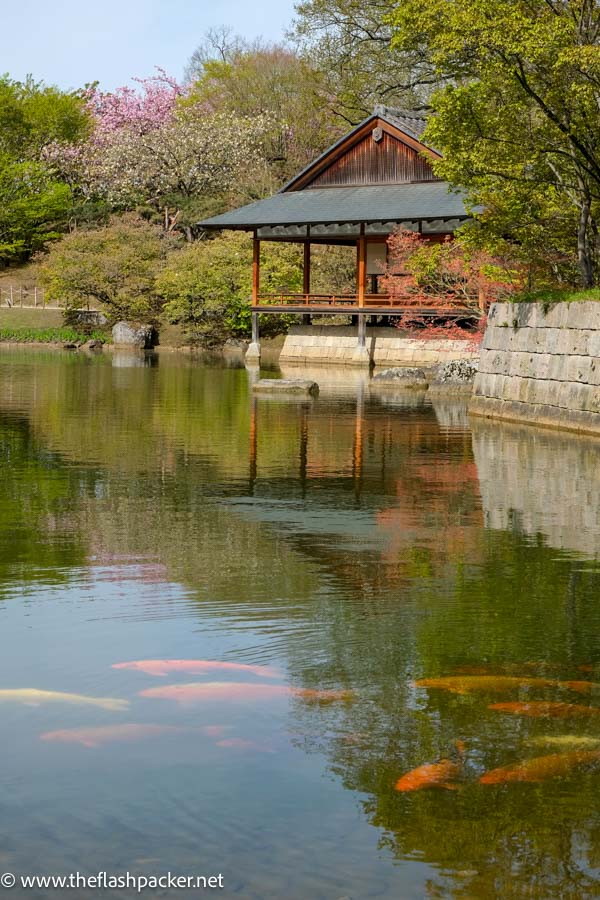
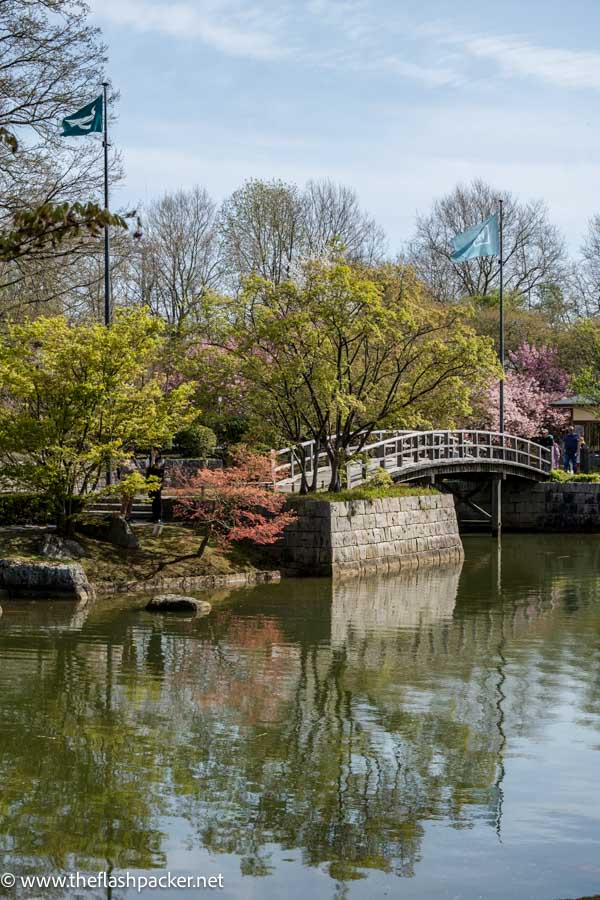
Featuring ponds filled with koi carp, waterfalls and graceful footbridges, it is a wonderful place in which to take time out from your busy sightseeing schedule. There is a ceremonial house, a traditional tea house, a Shinto shrine and a peace bell which you are encouraged to ring.
Visit in late Spring and you will be treated to a dazzling display of blossoms, thanks to the 225 cherry trees planted in the garden.
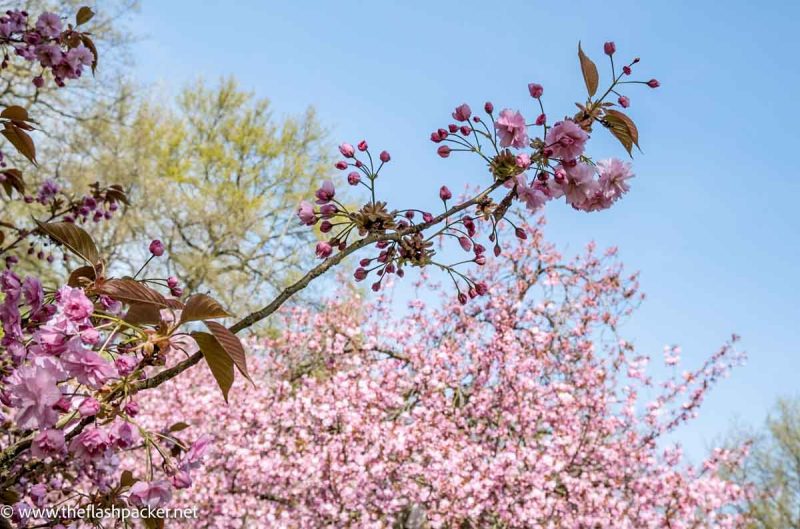
Getting there
The Japanese Garden of Hasselt is located at Gouverneur Verwilghensingel 15, 3500 Hasselt. It will take you 20 minutes to walk there from Hasselt city centre but it is also served by the following buses: 11, 20a, 36 and 45
Opening hours
It is open between March and October, Tuesday – Sunday from 10 am to 5 pm (last admission at 4.30 pm). It is closed on Mondays
Ticket price
In 2024, the adult ticket price is €6. Concessions are available.
2. There’s a wonderful cathedral (Sint-Quintinuskathedraal)
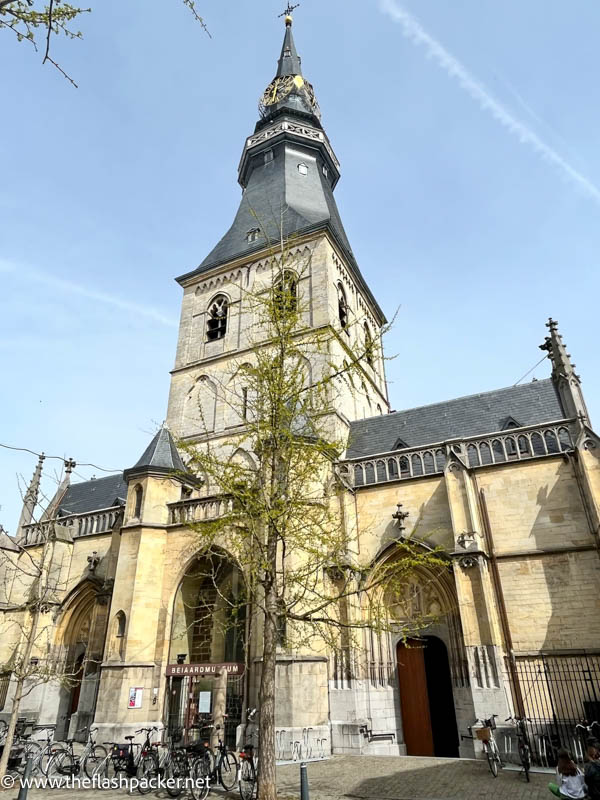
Like many cathedrals in Belgium, St. Quentin’s Cathedral has a long construction history.
A church first occupied this site as early as the 8th Century. This was replaced by a Romanesque church in the 11th century, remnants of which survive in the cathedral’s tower.
Work that took place between the 13th and 15th Centuries resulted in the Gothic structure that we see today. St Quentin’s Church was elevated to cathedral status in 1967 following the formation of the Diocese of Hasselt.
Step inside to take a look at the frescoes by the Hasselt painter Godfried Guffens (1823-1901), the cathedral’s Renaissance choir stalls and 19th Century stained glass windows.
Address: Vismarkt, 3500 Hasselt
Opening hours: Daily from 9.30 am until 5.30 pm
3. It is home to a UNESCO-listed beguinage
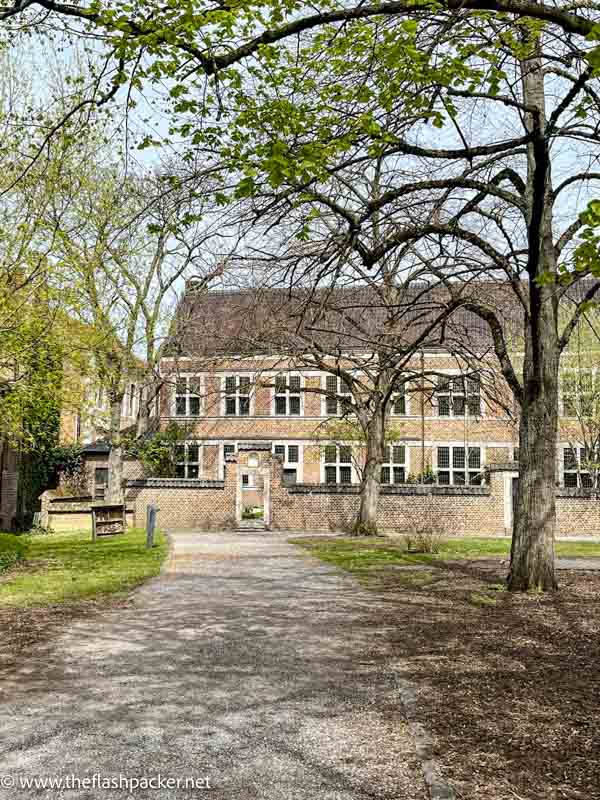
Hasselt’s beguinage is one of 13 in Belgium that were collectively designated a UNESCO World Heritage site in 1998.
A beguinage is an architectural complex, laid out like a small town, which was created to house beguines. These were lay sisterhoods of the Roman Catholic Church, founded in the 13th century in the Low Countries.
Beguines were still living and working in the walled beguinage in Hasselt up until 1886. Today, it is the home of the House for Contemporary Art, Design & Architecture.
4. You can learn more about Belgium’s favourite tipple (and try some!)
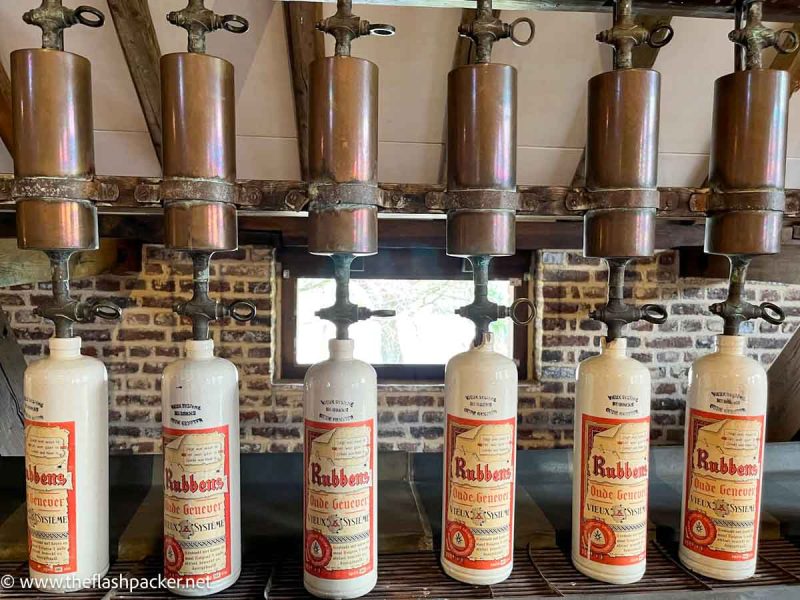
Jenever, also known as genever, is a type of Belgian gin made from corn grain, juniper berries and other aromatics. To learn more about this popular spirit, visit the Jenever Museum Hasselt (Jenevermuseum Hasselt).
The museum is housed in an attractive, fully operational 19th Century distillery and focuses on the history and production of jenever through its extensive collection of artefacts. This includes glass bottles, stone jugs and pitchers, glasses, posters and bottle labels.
At the end of the self-guided tour, you get the chance to conduct a spot of empirical research with a free shot at the museum’s tasting bar. The original grain jenever recommended by the cheerful staff was like nectar.
Cheers!
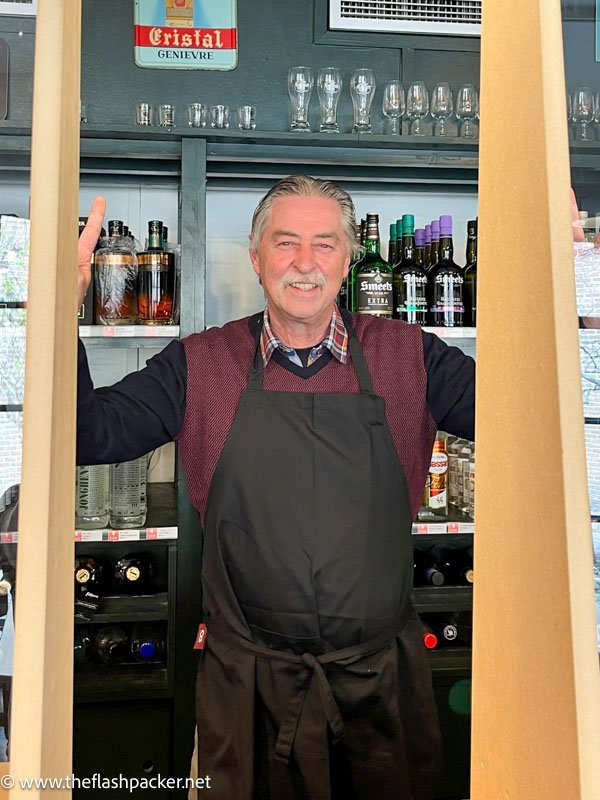
Address: Witte Nonnenstraat 19, 3500 Hasselt,
Opening hours: The Jenever Museum Hasselt is open from Tuesday to Sunday, 10 am to 5 pm (last entry at 16 h). It is closed on Mondays and on December 24th, 25th, 31st and January 1st.
Entrance fee: In 2024, an adult admission ticket costs € 7. This cost can change during special exhibitions. Check the museum’s website for up-to-date information.
5. HASSELT is one of the world’s great street art cities
Hasselt is perhaps best known for its outstanding street art collection.
Street art comes and goes but at the last count, there were around 150 works of art adding splashes of colour and whimsy to the city’s walls.

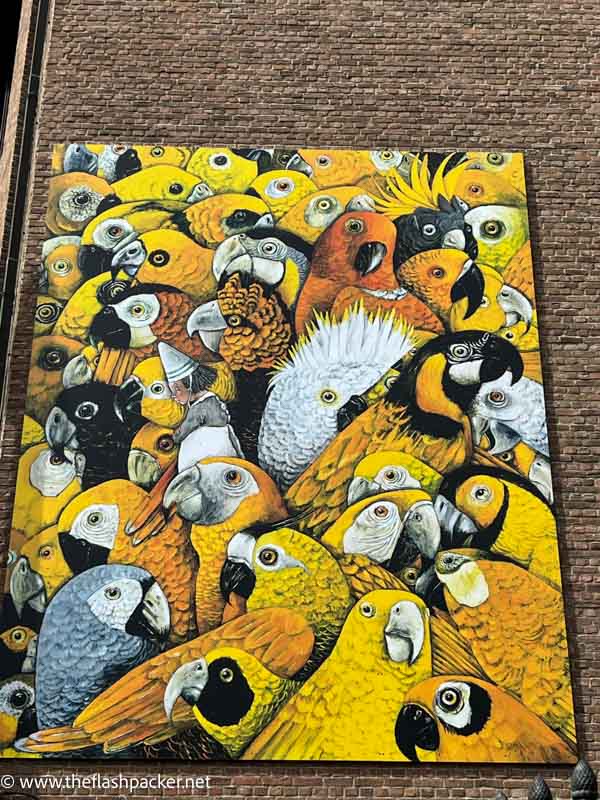
To explore the street art of Hasselt, download the free Street Art Cities app on your iPhone or Android phone. This GPS-enabled app not only plots the location of artworks in central Hasselt but also provides information about the murals.
You can search for works by artist or follow one of the app’s three Hasselt street art tours. There are two walking tours and one cycle route covering a distance of between 3.5 and 10.8 km.
6. To visit the historic Herkenrode Abbey (and try its beer!)
Founded around 1180 by Count Gerard of Loon, Herkenrode was the first Cistercian women’s abbey in the Low Countries. The abbey went through periods of great prosperity and devastating decline before the religious community was expelled at the turn of the 18th Century.
Learn about its chequered history in its Experience Centre. If you are visiting Hasselt in the summer months, make time for Herkenrode Abbey’s garden. This covers an area of two hectares and is home to more than 500 different types of plants.
The Middle Ages was the golden age of beer. In a time when there was a good chance that water might kill you, beer was a healthy option.
Complete your visit with one of Herkenrode Abbey’s award-winning beers. The recipes for these three beers are those used by the sisters over 800 years ago.
Getting there: The address of the abbey is Herkenrodeabdij 4, 3511 Hasselt. To get there, take bus 51 Heusden from the train station and alight at the stop ‘Herkenrode Brug’. Alternatively, rent a bike (Herkenrode Abbey is located between junctions 94 and 237 of the Limburg cycle route network).
Opening hours: Herkenrode Abbey is open from Tuesday to Sunday, 10 am to 5 pm. It is closed on Mondays (except in July and August) and on 24, 25 and 31 December and 1 January.
Entrance fee: Admission fee applies to both the abbey and garden. A combination ticket is available.
Check its official website for current information.
7. YOU CAN CHANNEL your inner fashionista at Hasselt Fashion Museum
This is one of the best things to do in Hasselt if you are a fashion follower.
Housed in a 17th-century building, the Hasselt Fashion Museum (Modemuseum Hasselt) traces the history of Western fashion from 1750 to the present time. Its extensive collection numbers approximately 18,000 items, including clothing, shoes, handbags, accessories and underwear.
Address: Gasthuisstraat 11, 3500 Hasselt
Opening hours: Hasselt Fashion Museum is open from Tuesday to Sunday, 10 am to 5 pm. It is closed on Mondays and on 24, 25 and 31 December and 1 January.
Entrance fee: Admission fee applies. Check here for up-to-date information on opening hours and ticket prices.
8. Hasselt has an appealing historic city centre
There’s no show-stopping square in Hasselt, no must-see art collection, and none of the almost palpable sense of history you experience in other Belgian cities like Bruges or Leuven. Don’t visit Hasselt expecting to wander along the side of meandering canals lined with gable-roofed buildings.
But that doesn’t mean that Hasselt is devoid of charm. Far from it.
Although Hasselt is largely a modern city, its centre is mostly car-free, making it a pleasure to roam.
There is a handful of attractive older buildings lining its interlocking squares. These include the half-timbered Het Sweert on Grote Markt (1659), the city’s 17th Century town hall and the Renaissance refuge house for Herkenrode Abbey.
9. Hasselt is much quieter than the Belgian tourist destinations
As it is not home to any big hitters, Hasselt is not on many people’s radars when they visit Belgium. As a result, the city attracts a fraction of the visitors descending on the tourist honeypots of Bruges and Brussels.
This is one of the best reasons for visiting Hasselt. If you have ever visited Brussels’ Grand Place on a Saturday afternoon, you will know what I mean.
10. Visiting Hasselt is easy from other Belgian cities
Last but not least, Hasselt is a super easy day trip from other Belgian cities, including Antwerp, Brussels and Leuven. From any of these cities, you will arrive in Hasselt within 80 minutes.
Trains leave Antwerp and Brussels every 30 minutes for Hasselt. The average journey time is around 70/80 minutes respectively.
Frequent trains also run between Hasselt and Leuven (40 minutes).
Enjoy your day in Hasselt!
If you have found this guide helpful and are planning further travel in Belgium, take a peek at my other articles (here’s my Belgium 1-week itinerary for starters)
Gorgeous Ghent is a terrific base for exploring Belgium by train. Within 30 minutes or so, you can explore the awesome chocolate shops in Bruges.
Consider some of its more under-the-radar destinations (my day in Mechelen was a treat). I also loved my day trip to Leuven, which is home to De Kruidtuin Leuven, the oldest botanical garden in Belgium.
Visit French-speaking Wallonia by exploring Tournai, home to a UNESCO-listed cathedral, Dinant or Namur. Finally, if you crave a day by the dunes, Ostend is Belgium’s best seaside town.
Happy travels!

About Bridget
Bridget Coleman has been a passionate traveller for more than 30 years. She has visited 70+ countries, most as a solo traveller.
Articles on this site reflect her first-hand experiences.
To get in touch, email her at hello@theflashpacker.net or follow her on social media.
